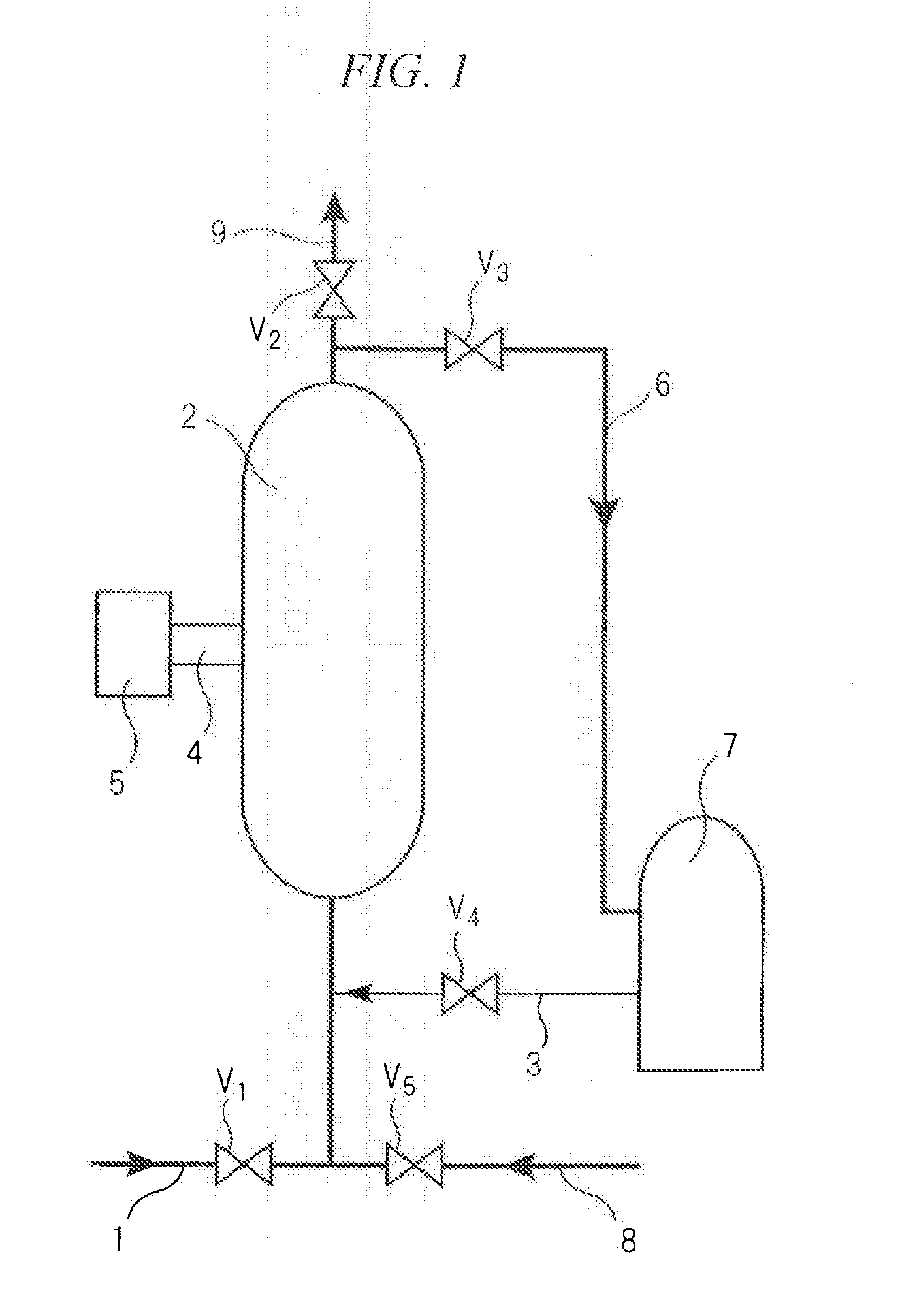Hybrid adsorbent and method of capturing carbon dioxide in gas
a carbon dioxide and hybrid technology, applied in the field of hybrid adsorbent and a method of separating and capturing carbon dioxide, can solve the problems of high energy required to desorb carbon dioxide using a vacuum pump, expensive corrosion-resistant steel apparatus, etc., and achieve the effect of low cos
- Summary
- Abstract
- Description
- Claims
- Application Information
AI Technical Summary
Benefits of technology
Problems solved by technology
Method used
Image
Examples
example 1
[0068]Next, adsorption and desorption of carbon dioxide were performed under the same conditions as Comparative Example 1, except for using a hybrid adsorbent prepared by mixing magnetite (Fe3O4) nanoparticles of 2.5 mass %, which has an average particle diameter of 80 nm with molecular sieve 13X, as an adsorbent. Further, the magnetite (Fe3O4) nanoparticles were prepared by the PVS (Physical Vapor Synthesis) using plasma. As a result, as shown in Table 1, the desorption ratio of the carbon dioxide of Example 1 was 28.6%, which could be improved more than the desorption ratio of Comparative Example 1. In addition, the specific energy consumption of Example 1 was 7.3 kWh / kg-CO2, which was decreased more than the specific energy consumption of Comparative Example 1.
example 2
[0069]Adsorption and desorption of carbon dioxide were performed under the same conditions as Example 1, except for setting the amount of mixed magnetite (Fe3O4) nanoparticles in a hybrid adsorbent at 5.0 mass %. As a result, as shown in Table 1, the highest achieved temperature (maximum temperature) of the hybrid adsorbent of Example 2 increased up to 64° C. from 55° C. in Comparative Example 1 and Example 1. Therefore, it was possible to further improve the desorption ratio of the carbon dioxide at 32.1% in Example 2, higher than the desorption ratio of Example 1. Further, the specific energy consumption of Example 2 was 5.8 kWh / kg-CO2, which was decreased more than the specific energy consumption of Example 1.
example 3
[0070]Adsorption and desorption of carbon dioxide were performed under the same conditions as Example 1, except for setting the amount of mixed magnetite (Fe3O4) nanoparticles in a hybrid adsorbent at 10 mass %. As a result, as shown in Table 1, the highest achieved temperature (maximum temperature) of the hybrid adsorbent of Example 3 increased up to 75° C. from 55° C. in Comparative Example 1 and Example 1. Therefore, it was possible to further improve the desorption ratio of the carbon dioxide at 33.2% in Example 3, higher than the desorption ratio of Example 2. Further, the specific energy consumption of Example 3 was 5.4 kWh / kg-CO2, which was decreased more than the specific energy consumption of Example 2.
PUM
| Property | Measurement | Unit |
|---|---|---|
| Percent by mass | aaaaa | aaaaa |
| Particle diameter | aaaaa | aaaaa |
| Particle diameter | aaaaa | aaaaa |
Abstract
Description
Claims
Application Information
 Login to View More
Login to View More - R&D
- Intellectual Property
- Life Sciences
- Materials
- Tech Scout
- Unparalleled Data Quality
- Higher Quality Content
- 60% Fewer Hallucinations
Browse by: Latest US Patents, China's latest patents, Technical Efficacy Thesaurus, Application Domain, Technology Topic, Popular Technical Reports.
© 2025 PatSnap. All rights reserved.Legal|Privacy policy|Modern Slavery Act Transparency Statement|Sitemap|About US| Contact US: help@patsnap.com


